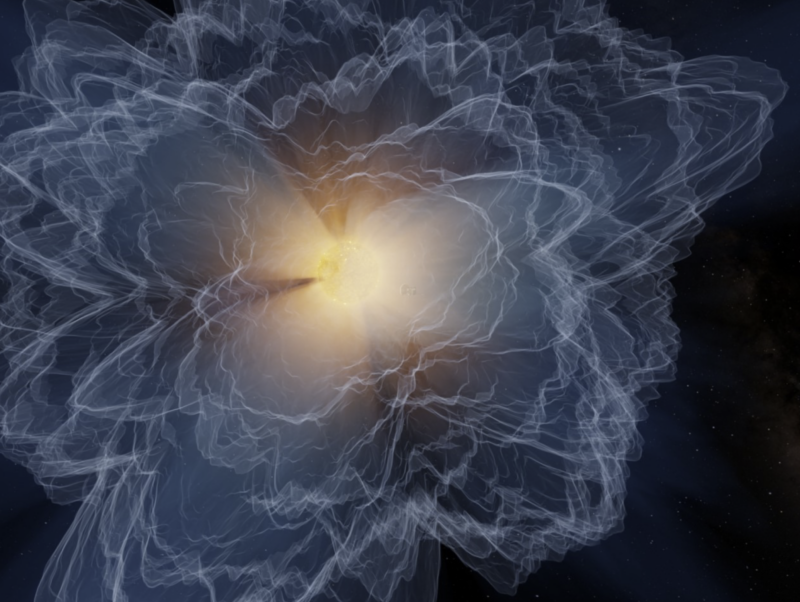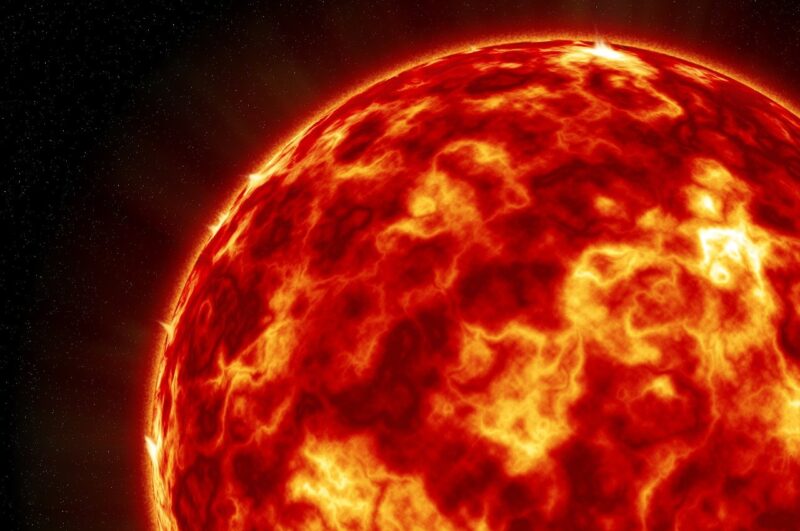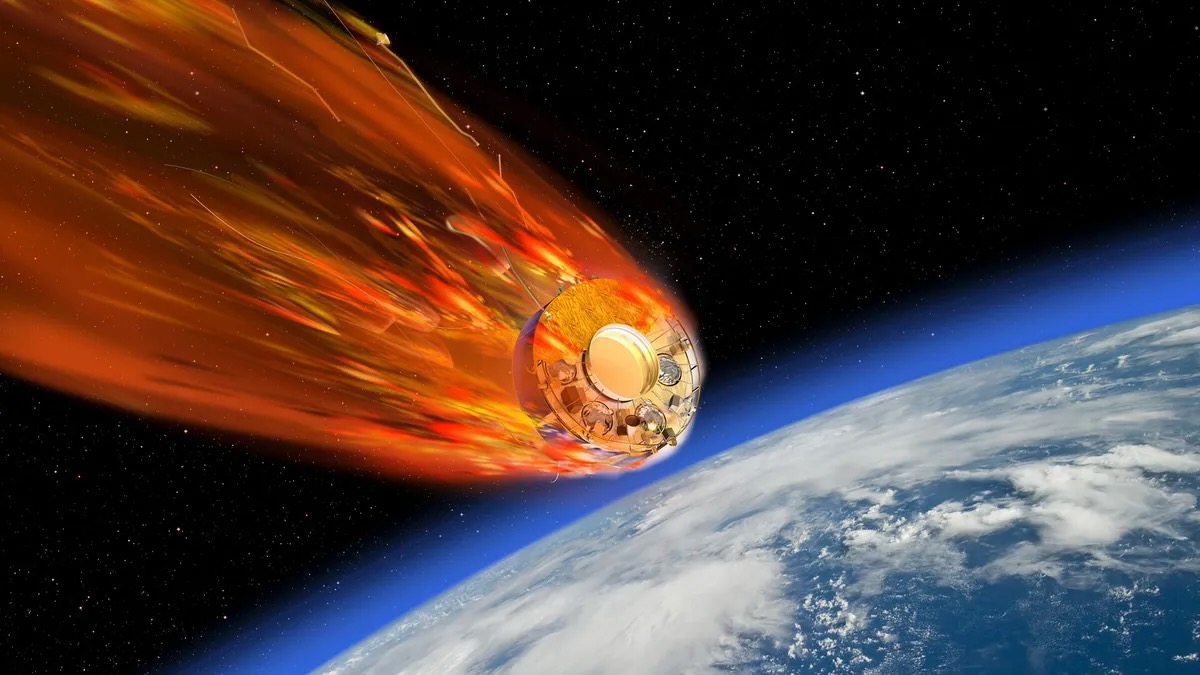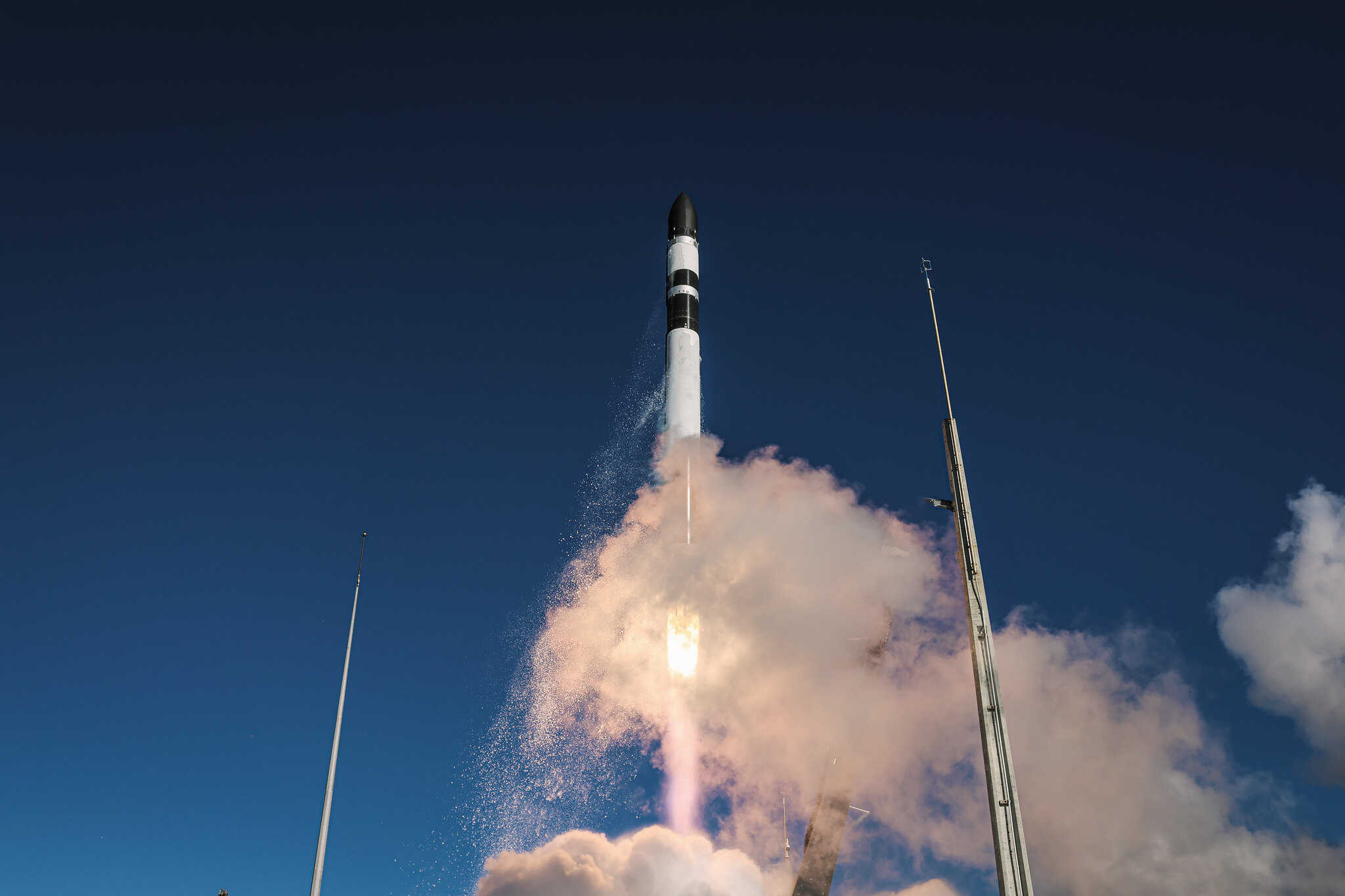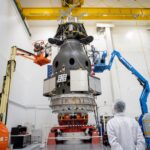Now Reading: Weird! Titan’s atmosphere is wobbling like a gyroscope
-
01
Weird! Titan’s atmosphere is wobbling like a gyroscope
Weird! Titan’s atmosphere is wobbling like a gyroscope


- Titan is Saturn’s largest moon. It has a dense, hazy atmosphere made mostly of nitrogen.
- Titan’s atmosphere is wobbling like a gyroscope, a new study of data from the Cassini mission has found. Why is it doing that?
- Some unknown event in Titan’s past likely knocked the atmosphere off-kilter, the researchers said.
New mystery about Titan’s atmosphere
Saturn’s largest moon Titan has a dense atmosphere composed mostly of nitrogen. You might expect that it rotates around in sync with the moon’s surface, but it doesn’t. Researchers in the U.S. and U.K., led by the University of Bristol, said on May 22, 2025, that it wobbles around, kind of like a gyroscope. This wobbling motion also shifts with the seasons. Why it does this isn’t known yet, but the researchers said something likely impacted Titan’s atmosphere in the distant past, knocking it off its normal spin axis. The scientists used data from NASA’s Cassini mission for the new study.
Cassini explored Saturn and its moons, including Titan, from 2004 to 2017. As well as studying Titan’s atmosphere, it provided unprecedented views of the moon’s vast hydrocarbon dunes and methane/ethane rivers, lakes and seas.
Titan is the only moon in the solar system that has a substantial atmosphere. It is dense and made mostly of nitrogen and methane, with clouds and haze of organic hydrocarbons. In fact, the orangish haze completely obscures the surface from view, so spacecraft like Cassini need to use radar to see surface features. In addition, Titan also has strong winds that move about 30 times faster than the rotating surface below them.
The researchers published their peer-reviewed findings in The Planetary Science Journal on May 20, 2025.
Titan’s odd atmospheric wobbling seen for the 1st time
This is the first time scientists have seen this unusual behavior of Titan’s atmosphere. They had expected the atmosphere would simply rotate along with the surface. But that’s not what the Cassini data revealed.
Instead, the atmosphere wobbles, reminiscent of how a gyroscope operates. Lead author and postdoctoral researcher Lucy Wright at Bristol’s School of Earth Sciences said:
The behavior of Titan’s atmospheric tilt is very strange! Titan’s atmosphere appears to be acting like a gyroscope, stabilizing itself in space.
The rotation of the atmosphere isn’t centered around the moon’s poles, as expected. Rather, it’s tilted and shifts in sync with Titan’s long seasons. Titan has regular seasons, like Earth, but they are much, much longer. In fact, one year on Titan is equivalent to about 30 Earth years. Wright said:
Even more intriguingly, we’ve found that the size of this tilt changes with Titan’s seasons.

Why is Titan’s atmosphere wobbling?
As of now, the researchers aren’t sure why Titan’s atmosphere wobbles the way it does. As co-author Nick Teanby at the University of Bristol noted:
What’s puzzling is how the tilt direction remains fixed in space, rather than being influenced by the sun or Saturn. That would’ve given us clues to the cause. Instead, we’ve got a new mystery on our hands.
The research team hypothesized that something happened in Titan’s past that knocked its atmosphere off-kilter. Wright said:
We think some event in the past may have knocked the atmosphere off its spin axis, causing it to wobble.
But what that event was is unknown.
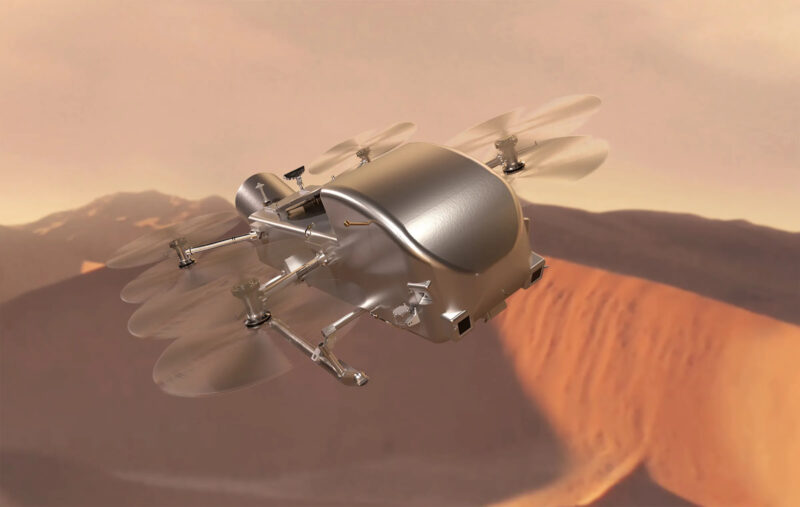
Implications for Dragonfly mission
Titan’s wobbling atmosphere is an interesting mystery, but it also has implications for future exploration of Titan. Dragonfly is a drone-like rotorcraft that will use Titan’s winds to explore various locations. It is scheduled to launch in 2028 and arrive at Titan in 2034. It will fly to an interesting location, on land, and then take off again to go somewhere else.
Flying in Titan’s dense atmosphere – something never attempted before – will be tricky. The wobbling atmosphere could affect how scientists calculate the landing trajectories for Dragonfly.
Cassini’s legacy
Cassini’s mission at Saturn and its moons ended in 2017. However, the fact that scientists are still making new discoveries from its data shows how much more there is to learn. Indeed, as co-author Conor Nixon at NASA’s Goddard Space Flight Center described it:
This instrument, partly built in the UK, journeyed across the solar system and continues to give us valuable scientific returns. The fact that Titan’s atmosphere behaves like a spinning top disconnected from its surface raises fascinating questions; not just for Titan, but for understanding atmospheric physics more broadly, including on Earth.
Bottom line: Using data from NASA’s Cassini mission, scientists have found that Titan’s atmosphere is wobbling like a gyroscope. But they’re not sure why.
Read more: Frigid Titan has soaring, bubbling clouds with unusual rains
Read more: Is there life on Titan? If so, it’s very rare
The post Weird! Titan’s atmosphere is wobbling like a gyroscope first appeared on EarthSky.
Stay Informed With the Latest & Most Important News
Previous Post
Next Post
-
 012024 in Review: Highlights from NASA in Silicon Valley
012024 in Review: Highlights from NASA in Silicon Valley -
 02Panasonic Leica Summilux DG 15mm f/1.7 ASPH review
02Panasonic Leica Summilux DG 15mm f/1.7 ASPH review -
 03From Polymerization-Enabled Folding and Assembly to Chemical Evolution: Key Processes for Emergence of Functional Polymers in the Origin of Life
03From Polymerization-Enabled Folding and Assembly to Chemical Evolution: Key Processes for Emergence of Functional Polymers in the Origin of Life -
 04How New NASA, India Earth Satellite NISAR Will See Earth
04How New NASA, India Earth Satellite NISAR Will See Earth -
 05And Thus Begins A New Year For Life On Earth
05And Thus Begins A New Year For Life On Earth -
 06Astronomy Activation Ambassadors: A New Era
06Astronomy Activation Ambassadors: A New Era -
07SpaceX launch surge helps set new global launch record in 2024












